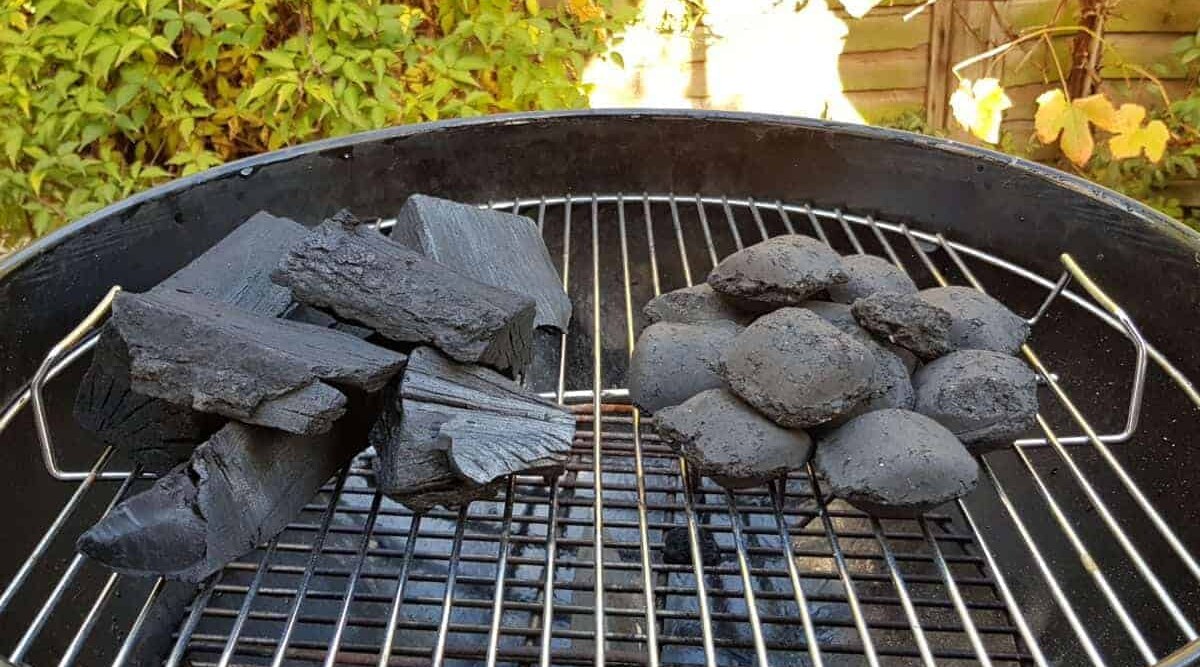
Leaving aside the favored brand — or even sometimes color — of your grill, and whether to use a Texas Crutch during a ribs or brisket cook, possibly the most heated debate in the whole world of grilling is that of lump charcoal vs briquettes.
Charcoal, because of its high carbon content, has more potential energy than raw wood: it can provide cooking heat that burns hotter, more steadily, and cleaner than dried wood.
To say a fire burns cleaner is merely saying it’s free of eye-watering, sneeze-inducing chemicals going up in smoke. And that’s one of the benefits of using charcoal rather than dried wood.
There are two basic types of charcoal:
- Lumpwood charcoal
- Charcoal Briquettes
Almost everybody has an opinion on which is best, and many will argue fiercely for their chosen side.
So, what is the difference between the two types? What are their origins, advantages and disadvantages? Why do some choose one fuel type over the other?
That’s what we’re going to look at in this guide and by the end of the discussion, you’ll have a good grasp of which best suits your grilling or smoking needs.
Lump Vs Briquettes Key Takeaways
- Lump — Is 100% all natural carbonized wood, burns hotter but faster, irregular shape can mean irregular inconsistent burns. It adds more smoke flavor to food.
- Briquettes — Are compressed sawdust that’s carbonized, often contains fillers and binders, burns cooler but for longer, burns consistently due to uniform shape. Adds low smoke flavor to food.
- Can use either in most grills or smokers.
- Lumpwood is better for high heat searing and grilling, and where you want to add the most flavor.
- Briquettes are better for controlled, low and slow smoking cooks — except in kamado style grills where you must use lump.
Jump to:
What Wood Would Do?
There are two basic types of trees, hardwood and softwood. They’re defined by whether they keep their leaves year ‘round.
Softwoods include pine, fir, cedar, and spruce — these keep their leaves. They contain high amounts of saponins and turpines, chemical compounds used to make soap and foam-free fire extinguishers. Not surprisingly, they introduce a weird taste in anything cooked over them which could make some people sick.
And that’s why charcoal is always made from hardwood. These leaf shedders include:
- Apple
- Cherry
- Hickory
- Mesquite
- Oak
- Pecan
Hardwoods contribute to the flavor of foods. Interestingly, where and how a tree grows matters more than the type of tree.
Factors affecting wood flavor:
- Geography
- Climate
- Bark thickness
- Wood’s drying time
- Water content
Grilled meat with a regional accent — how cool is that!
Purity and Charcoal Quality
Unfortunately, there are no international standards for the manufacture of charcoal. You’ll have to take their word for it that they’re using untreated wood.
And realistically a bag of lump charcoal could have more than one tree type, depending on what’s available from the wood source. But a blend of woods could make for a unique flavor experience.
On the bags or in the online product description, there may be some language about quality processes. These should eliminate or sharply reduce your chance of finding rock, metal, PVC or other oddities nestled in with your charcoal.
Those are the basics of charcoal. You may want to check out this short overview video by Fine Cooking, Lump vs. Briquette — just ignore the hand-over-fire test and use an IR thermometer.
Now let’s look at the two basic forms: lump and briquette.
Lump Charcoal 101
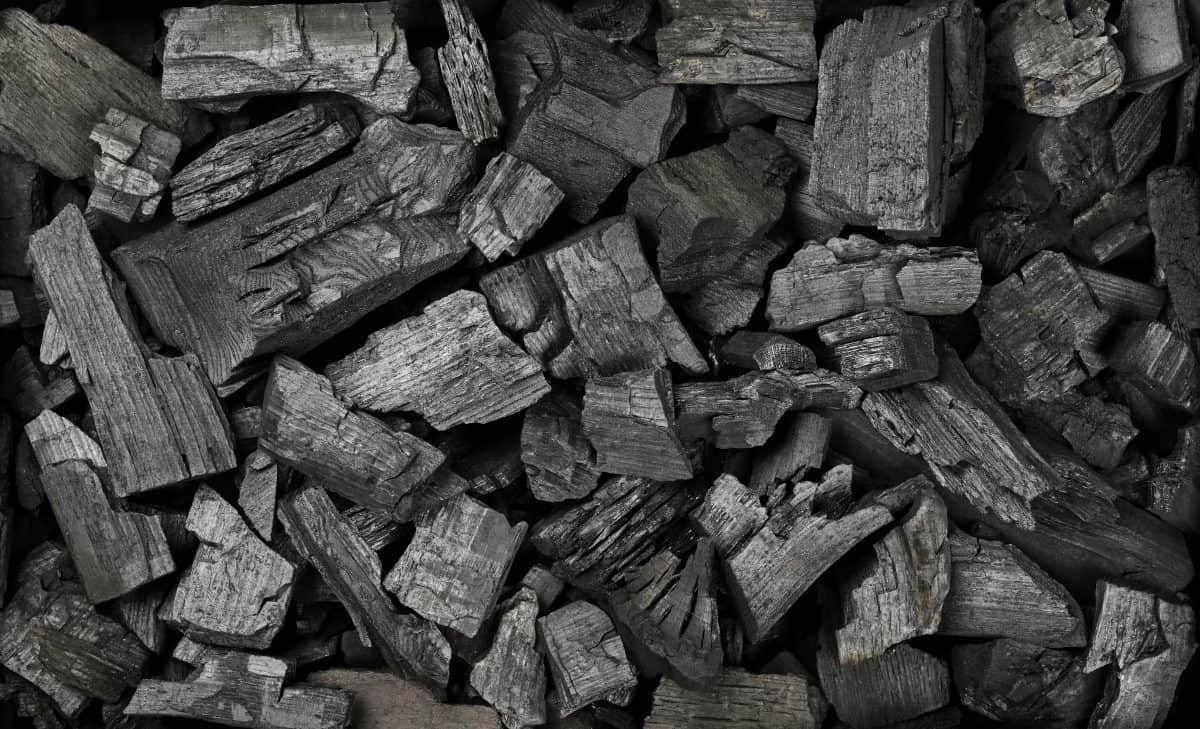
Lump is charcoal at its most basic and is essentially wood that’s been partially burned down to basics, that’s been through a carbonization process, until what’s left is just that: Carbon.
It’s burned in a low-oxygen silo to remove sap, moisture and naturally-occurring methane, hydrogen, and a bunch of other chemicals. The process is called charring; you may still see charcoal sold as char wood.
You can consider it a type of recycling since it’s mostly the by product of coppicing, and scrap wood from mills and wood businesses that are used, as opposed to using new trees.
It typically burns at 1400 °F (760 °C) or greater which is a temperature far hotter than can be achieved with briquettes.
[Trivia: If your surname is Collier, it means your ancestors were charcoal makers.]
Pros
- Burns hot, so it needs to be closely monitored; especially if you decide to use it for smoking which requires a low, steady, and long-lasting
- Formulated to burn for an hour, so it’s great for a quick grilling session
- Smells great
- Produces abundant smoke flavor
Cons
- Not every piece is fully carbonized
- Larger pieces still contain cellulose and lignin, two of the three main wood components, which does increase flavor…but means varying flavor.
- Burns fast, making it necessary to add more over a long cooking session.
- Unevenly-sized pieces can vary from a half to 4 inches, meaning unpredictable cooking times, inconsistent temperatures and varying results.
- Cost more than briquettes
- Easily breaks into small, unusable bits and dust that reduces airflow resulting in a slow burning fire
Lighting That Fire
There’s self-lighting charcoal, but generally speaking, you want to avoid this — as well as using lighting fluid — because of the chemical smell of the fuel-soaked lumps affecting the flavor of your food.
Allowing time for burn off of lighting fluid could resolve that problem, but you can never really eliminate it.
Therefore, buy only all-natural lumpwood charcoal with no added chemicals, and use a natural firelighter to get the fire going, either wood wool or organic all natural starter cubes. Or use either one of our favorite tools: A charcoal chimney starter, or the extremely cool looking Looftlighter.
Briquettes 101
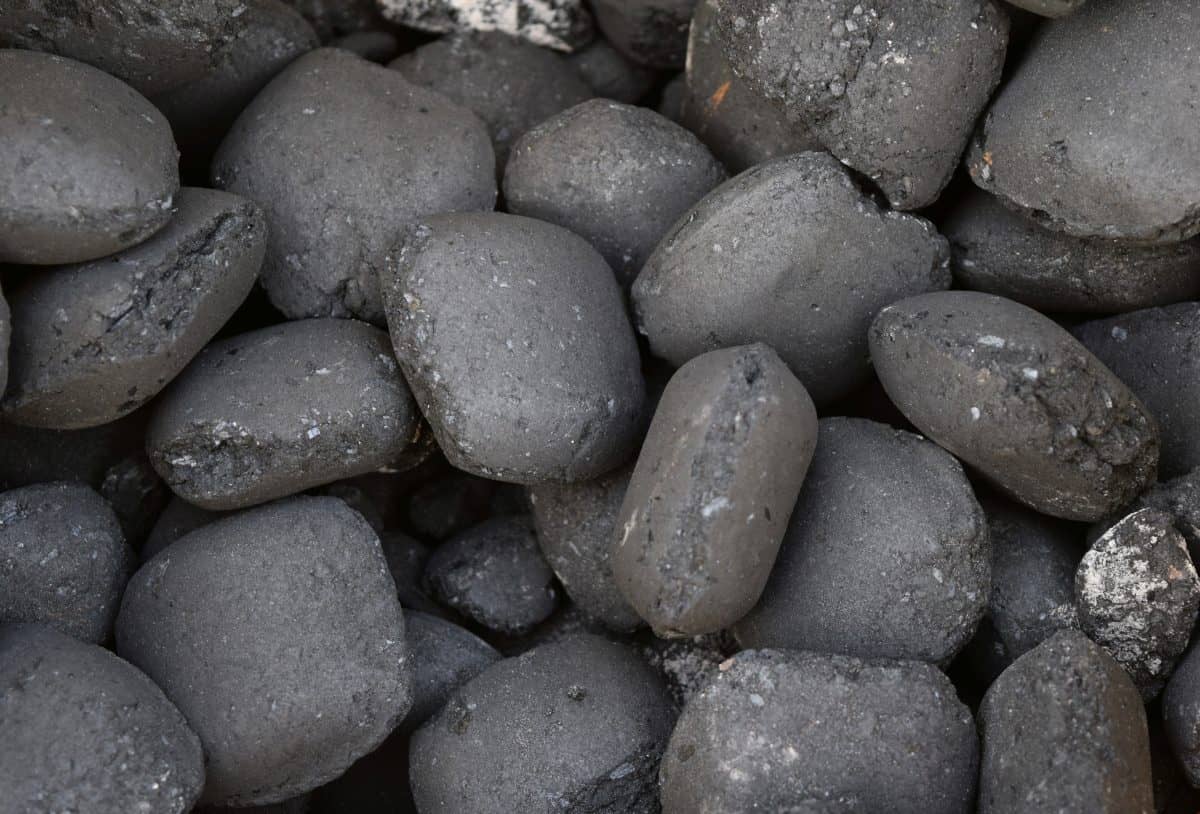
Or “briquet” according to Merriam-Webster’s dictionary which also provides the origin of the word — little brick.
They’re light, uniform and inexpensive. Traditionally, additives are mixed into sawdust then pressed into molds. Yes, briquettes are the chicken patty of the charcoal world. They typically burn at 800 to 1000 °F.
A Little Brick Trivia
The first mass-produced briquettes came from a collaboration by Henry Ford, Thomas Edison, and E.B. Kingsford in the 1920s. Ford used sawdust and scraps left over from wood used to make the bodies of those early roadsters.
What Are ‘Little Bricks’ Made Of?
The additives in briquettes, besides being shaping aids, also make unmolding the briquettes easier, make them easier to light and help control the burn rate. Traditional additives (chemicals) include sodium nitrate (A.K.A., Chile saltpeter), limestone, and borax.
Happily, the quest for all things natural has reached the charcoal world. Now you can grab a bag of natural charcoal briquettes made from whole wood and little else, maybe cornstarch. But also pay for the privilege of being so natural. These typically run a little over $2/pound.
If you’re a do-it-yourself kind of person, really like making things from scratch, you’ll be happy to know that you can make your own briquettes.
Mix biomass (e.g., corn husks, straw, wood chips(!), peanut shells) of choice with sawdust, place in the mold, fire, and poof! Briquettes.
Pros
- Built to burn longer and at a low temperature which makes them ideal for smoking
- Uniform shape makes them easier to arrange when using the charcoal snake method for smoking
- Lightweight
- Cheap
- Convenient
Cons
- Additives, including potential allergens
- Takes longer to light
- Leaves more ash because there’s less wood to burn
Finding Common Ground
Both lump and briquettes:
- Are born from trees
- Are fired
- Can be self-igniting
- Can be chemical-free
Let’s look at a few characteristics that set them apart and dispel a myth or two along the way.
Lump Charcoal Vs Briquettes: Supposed Differences During Use
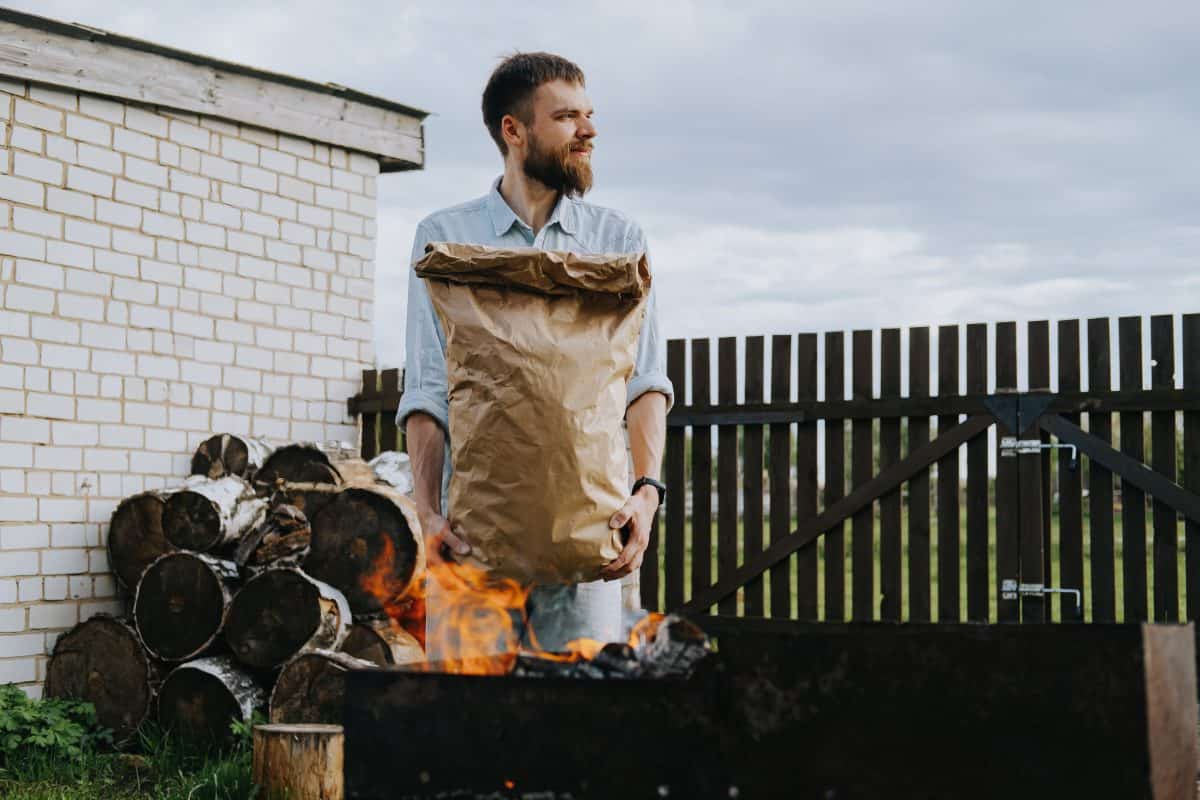
There are differences in the way the two types of coal burn, and hence the way we should use them. But not everything you hear is necessarily true. Let’s take a look, shall we?
Does Lump Really Burn Hotter?
Not according to AmazingRibs.com science advisor Dr. Greg Blonder. He says:
Hotter depends on how the coals are arranged. Because of their irregular shapes, they can nestle together like puzzle pieces and impair airflow which can reduce heat.
Fueled by Air
The prevailing wisdom is that lump is best for hot and fast grilling, while briquettes are best for low n slow.
However, air, or oxygen, feeds fire. A lump charcoal fire that has dust and bits blocking airflow can burn low and slow just like a briquette fire. Also, you can intentionally choke down the airflow in your barbecue by control of the vents.
I personally use locally sourced, single variety lump hardwood charcoal in all my low n slow cooks, so don’t think you cannot use lump for low n slow cooking.
Time and Speed
Briquettes are designed to burn for hours, making them ideal for the snake and other smoking methods. They are a natural for low and slow cooking.
Briquettes are the grilling equivalent of a Crockpot. Ingredients in, set, go to work, and come home to a satisfying meal.
Lump is designed to burn hot and fast for a short period, usually an hour. That’s great for direct grilling and searing. But that doesn’t rule out using them for indirect heat applications. The difference is effort: you’ll need to add more lump charcoal while the briquettes slowly cruise along without effort on your part.
Does Grill Type Matter?
Briquettes are more popular than lump for their ease, cost, and convenience.
But because kamado smokers don’t have much space for collecting ash, they can easily get overwhelmed by briquette fallout, with the higher amount of ash produced blocking the airflow through the charcoal grate in the firebox. This can lead to unwanted drops in temperature or even the fire going out!
Overall, either can work for most grill or smoker needs within the parameters we’ve talked about and knowledge of how to use the fuel type correctly in your particular smoker or grill.
But generally speaking, people with kamados will use lump charcoal, owners of other types of charcoal smokers such as weber smokey mountains and most charcoal grills will use briquettes.
Variations On A Theme
Manufacturers seem to delight in dizzying consumers with more labels that sometimes mean the same thing. Descriptions you’re likely to see when shopping for charcoal:
- Natural, chemical-free briquettes
- Organic hardwood lump
- 100% natural hardwood (isn’t that redundant?)
- Self-lighting
- Flavored charcoal
I even saw some natural hardwood products promoted as charcoal free. I don’t want to know what that means…
You know that anything labeled “natural” is going to cost more. Lump charcoal, being pure wood, is natural. Prices on Amazon for hardwood charcoal ranges between $1 to $2/pound.
Lump and Briquette in the Same Cook?
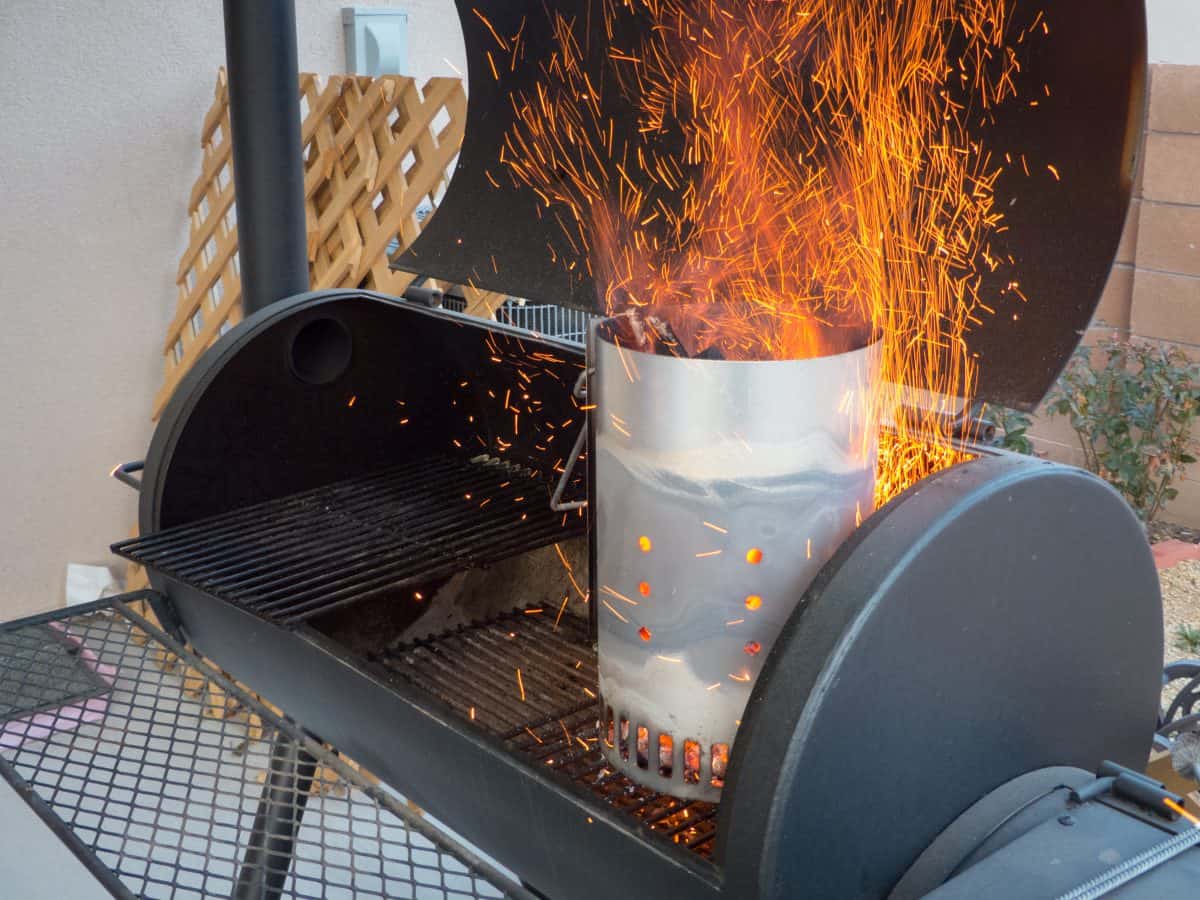
Whether one is better than the other lies in the eye of the griller. Depending on whom you talk to, there is or is not a definite or slight aftertaste from the briquette additives. Must be a taste-bud thing.
However, why not team them up, let their strengths combine and outweigh their weaknesses?
For example, placing a few lumps amid briquettes can produce a hotter fire and a quicker burn, perfect for searing and then holding a high temperature for a long grill time.
Kingsford sells a natural lump briquette that provides hot and consistent temperatures over a long cooking period. Others can’t be far behind.
On Location and Environment
You know a dedicated griller doesn’t let something like a windy, rainy, or snowy day get in the way of getting their BBQ on. These less-than-optimal weather conditions can be worked through by using more lump coal to get and keep a hot grill going.
Up where the air is rarefied, high altitude grillers face the challenge of keeping a fire going because the air is short on oxygen, moisture, and pressure.
Meats are 75% water, so you’ll also be challenged with keeping them from drying out. You’ll need to increase cooking time, but not temperature, says the U.S. Department of Agriculture (USDA).
In these high altitude and low oxygen environments, you may find briquettes work better since the very thin air pretty much makes cooking a low and slow process, even if that’s not what you’re aiming for.
Summing it all up
Talk about a subjective subject!
So much depends on where you grill, what and how that there can’t be any hard and fast rules on absolutely using this charcoal over the other.
What’s your experience? Do you solely use one type, or have you found a happy medium between the two at different times, for different purposes? I’d love to hear from you, so please leave your thoughts in the comments.
Happy grilling!


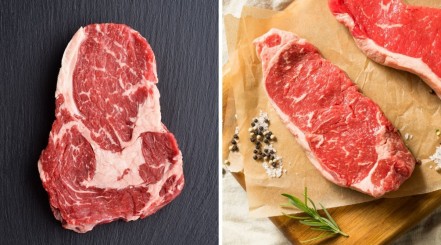
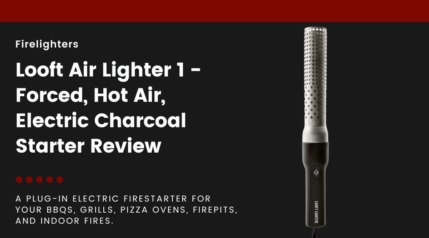

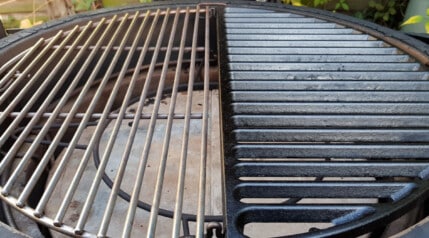
Thanks for this article. I’ve been reading a lot of different pieces about the different ways to use charcoal, yours is the first I found to discuss using briquet and lump types together.
Nice write up. My own experience taught me to use lump wood coal over briquettes in my offset smoker, or a mix of lump wood and wood. I use a charcoal basket and “the method” for my smoker. Weather dependent, I get 8-10 hours cooking time out of one basket, which equals about 3 Weber Chimneys worth of lump wood. My longest cook, 19 hours for a brisket, worked fine with refilling the basket. The problem I have with Kingsford charcoal is the sheer amount of ashes it produces. I tried it in my offset and after a longer cook I start blocking the airflow from underneath the basket — even with plenty of room below. Lump wood all the way for my smoker. I use briquettes for my everyday grilling on my Weber as it is consistent.
I need a complete work (write up) on production of briquette from palm kernel shell
There are a few articles on it that should help if you search on Google.
Hi
Interesting article, I have an offset grill/smoker. Looking to do my first long cook as just getting to grips with it. So bricks or lump or a mux of the two?
Hi Ian,
Most offset smoker users start the fire with charcoal, use that to warm the first few logs to be used, then roll with wood splits /logs for the duration of the cook. Over the long term, using only charcoal in a large offset smoker will be so expensive compared to using wood.
Sad to say I think charcoal is a big waste of money – try your mates and see what you think yourself
We bought a new bbq – a cube – and followed their recommendations to use charcoal and it was lit – wait he till greyed all over and it was to cold to cook a sausage
Hi, Peter. I have to disagree. I prefer charcoal to any other fuel, it giving the best flavor to foods in my opinion. I use natural lump almost always, briquettes only in certain situations (smoking in a WSM for example.)
What is the cube BBQ? I’m not aware of which that is. But if charcoal wasn’t hot enough to cook a sausage, something is definitely not right, typically either not enough airflow in the BBQ to keep the fire going, or not enough charcoal used.
Also, ‘Waiting for it to grey over’ is something you do not need to do with natural lump, only with some briquettes to make sure you are waiting for any nasty stuff to burn off so it doesn’t contaminate your food. You do not even need to do this with ‘all natural briquettes.’
If you send a pic of your BBQ, details of fuel used, the BBQ loaded and lit and ready to cook, I can perhaps advise what you might be able to differently?
Great article, thanks Mark. I am relatively new to low n slow cooking but have tended to use lump wood over briquettes in what maybe a misplaced notion that lump wood was purer and without fillers. After reading your article I think I now know why I have to keep topping up my fast and hot burning charcoal when using my ProQ for a low n slow cook. While I know that all briquets are not the same, I will definitely give them a try to see if I can get a better regulated slower burn.
Good info. Just got a new smoker. Your info, I will try. I’m in the Rocky Mt. so will probably go with the briquettes first to try. With some chunks.
I use a Texas smoker grill. I use briquettes for grilling and lump for smoking. Lump has less hotter coals and less ash so works well for smoking. Briquettes are hotter and better for grilling things like steak and chops. Personally I am not a fan of the fast lighting briquettes trend, as they tend to burn up to a white ash to fast if you are doing something that takes longer like chicken.
The biggest thing is if you use lighter, wait long enough for it to burn off well so as not to get the lighter taste. I usually wait 25-30 minutes before grilling.